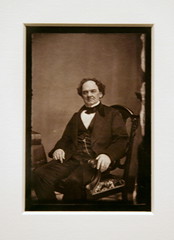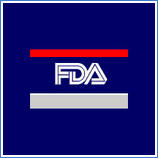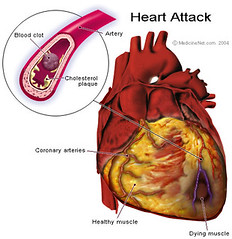 PT Barnum
PT Barnum I rarely write about Social Media. We blog (obviously), have a Twitter account, and post on other blogs - mostly with posts that relate to Georgia law and/or pharmaceutical litigation news. Our office is made up of litigators. We try cases- I am in trial Tuesday of this week for the third time this year.
I regularly read about what marketers and other lawyers say about Social Media. The so called social media are for the most part nothing more than carnival barkers. What I have just read has me irritated because the post's author is just plain wrong and uninformed.
I read an article titled: Small Firms, Big Lawyers: 7 reasons to Avoid Social Media
From the start the author (Jay Shepherd) points to a recent report that "had a section about which marketing methods solos and small firms found most effective." Shepherd commented on this report:
"The leading methods were:
- online directories (17.7%);
- word of mouth — which isn’t really a method, but more of a thing that happens (15.5%);
- group-advertising ventures (whatever the hell that is) (13.3%); and
- Yellow Pages (8.9%).
"The takeaway for me from that list is that small-firm lawyers don’t know what they’re doing when it comes to marketing." (emphasis added)
“Word of mouth” means sit back and hope someone tells someone else to hire me, “group-advertising ventures” sounds like some sort of mail-order scam, and I didn’t know they still printed Yellow Pages. ... (Sorry, Yellow Pages advertisers. Oh, wait. You’re not reading this because you’re offline.)"
Jay, you're wrong. First -You obviously don't mind putting down practices you know nothing about - 'group-advertising ventures" have been around for years. The ventures may look like the
Jim Sokolove model, or Staggerwalt and Associates, or others. Surely you have heard about the Texas group that advertises for IP clients on the web. You knew about those firms, right Jay? Or how www.findlaw.com touts its mass buying power on the web to garner better placement for little ol' small firms like mine.
For our office 'group advertising ventures' in the personal injury area of the law might look like a true 'joint venture' - Anywhere from two to seven law firms form a group that advertises on the web, radio, tv, or newspapers for a particular type of case . (For example, Katrina levee related property damage claims, or those seeking Dupuy knee work).Our firm gets approached at least 3 times a week by ventures seeking our $$$. OK, dead horse beaten, on to next mistake.
I don't understand your disdain for word of mouth - maybe you stammer in public, or are too arrogant to mix with 'the common folks.' In the south, word of mouth is proactive.
Word of mouth is speaking at a CLE on any area of the law - like trucking. My good friend and litigator Joe Fried is known simply as The Trucking Lawyer. He will speak at more than 30 CLE seminars this year. Here's his site:
http://www.thetruckingattorneys.com. Before you scoff, does your firm have more than $25 million in verdicts like his - in the past 10 months? Clients come to him thanks to word of mouth. Lawyers send him work thanks to word of mouth - where he engages people and talks about his results.
Word of mouth is the stock in trade for many smaller town attorneys. Rotary clubs, schools groups, alumni groups, lawyer groups, church groups, bible studies, business chambers - that is where word of mouth works. In my trial last month - in a tech city that is Atlanta - of 34 potential jurors less than 20% had heard of Twitter, but more than 75% were members of a civic or church group.
We both agree on the Yellow Pages. If you have received a call from 'the books' you'd know that there is a reason why only 8.9% admitted to paying for placement. In fact, I'd guess that 8.9% of any town's lawyers are on Twitter at all.
To my amazement, there is still an area not yet at the forefront for lawyers on the web - blogging. It is by far the most successful project my firm has taken on in the past 5 years. Our firm has three separate blogs.
Where is an area with little competition? Specialty sites for niche areas of the law. If you are not familiar with this type of site, go ahead and crap on it, Jay. For others reading this, take a look at the lawyers at Water Colorado:
http://www.watercolorado.com/water_rights2.shtml or attorneys who handle cattle cases:
http://cattlelawyers.com/default.aspx
Specialty sites should be part of a law firms' tech arsenal long before any Twitter account is set up by an attorney. Web sites now are easy to set up and maintain. If for example, someone needs an immigration attorney in the Vietnamese community, what makes a better first impression - a site focused on that ethnic group, or a site that has a law firm with a .jpg of a gavel, and a nav bar with 22 areas of the law? Spend 20 hours looking at the competition for the type of work your firm wants - and then set up a site in that area alone.
Now, on to
Twitter: Lawyers who get
hornswaggled or even brow beaten into thinking Twitter is a must have should be ashamed of themselves for being so damned gullible. But hey, Jay, lead them to Twitter and away from blogging - hours and hours of time will be wasted on Twitter.
You wrote: "But I can connect to 2,345 people at once
on Twitter and tell them about something that’s on my mind or that I think they should read.It would take a lot more time to make all those phone calls or have random acts of lunch." Read this though Jay - 99% of those people don't really care about your one tweet. It's just noise.
Here's a thought for attorneys - spend more than an hour a month just updating the firm web page. Learn Google Ad Words. Buy a google ad just for your firm name. Buy a .com that is the same as your office telephone number. Learn the basics of the web - before you get seduced by the allure of Twitter.
Find a listserver somewhere - GTLA has one, the Florida Justice has one - and get active there - post on subjects. Comment, engage.
Those basics - along with word of mouth - will bring results with hard work and discipline.

















